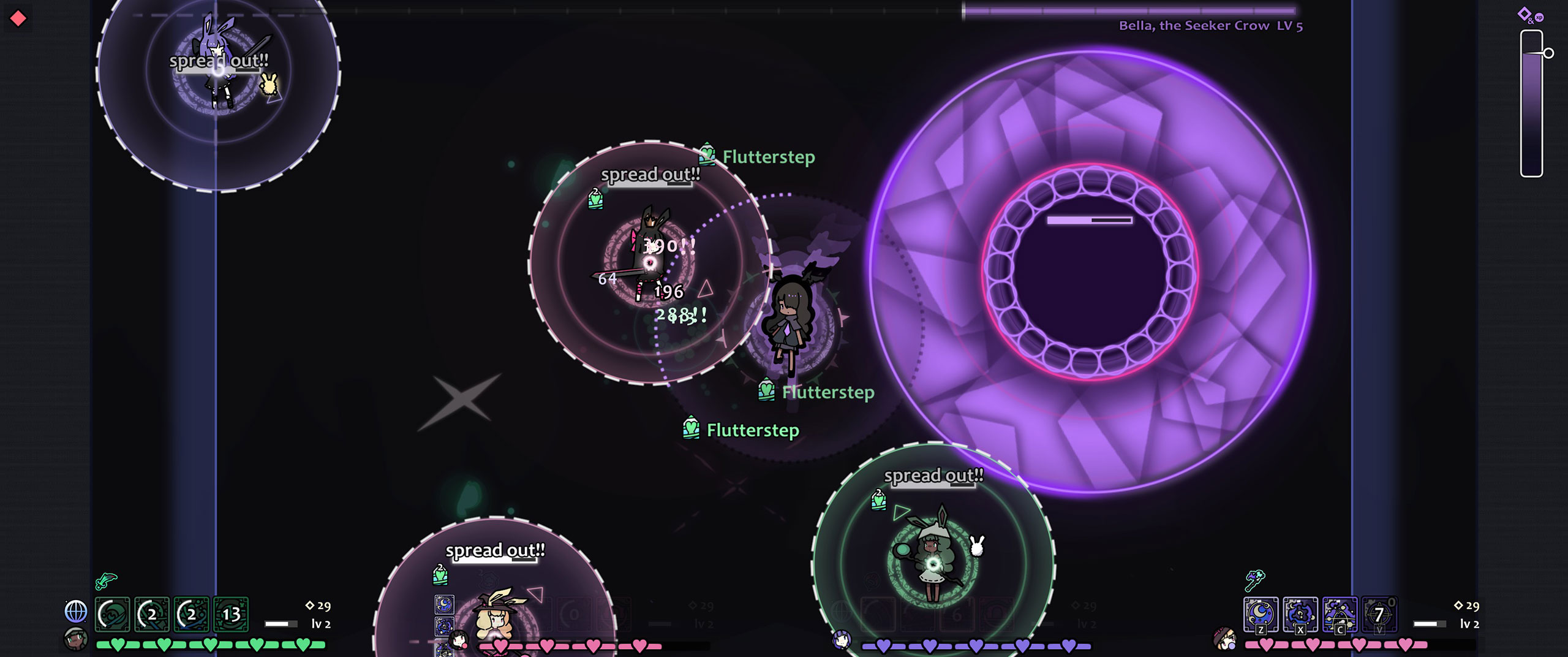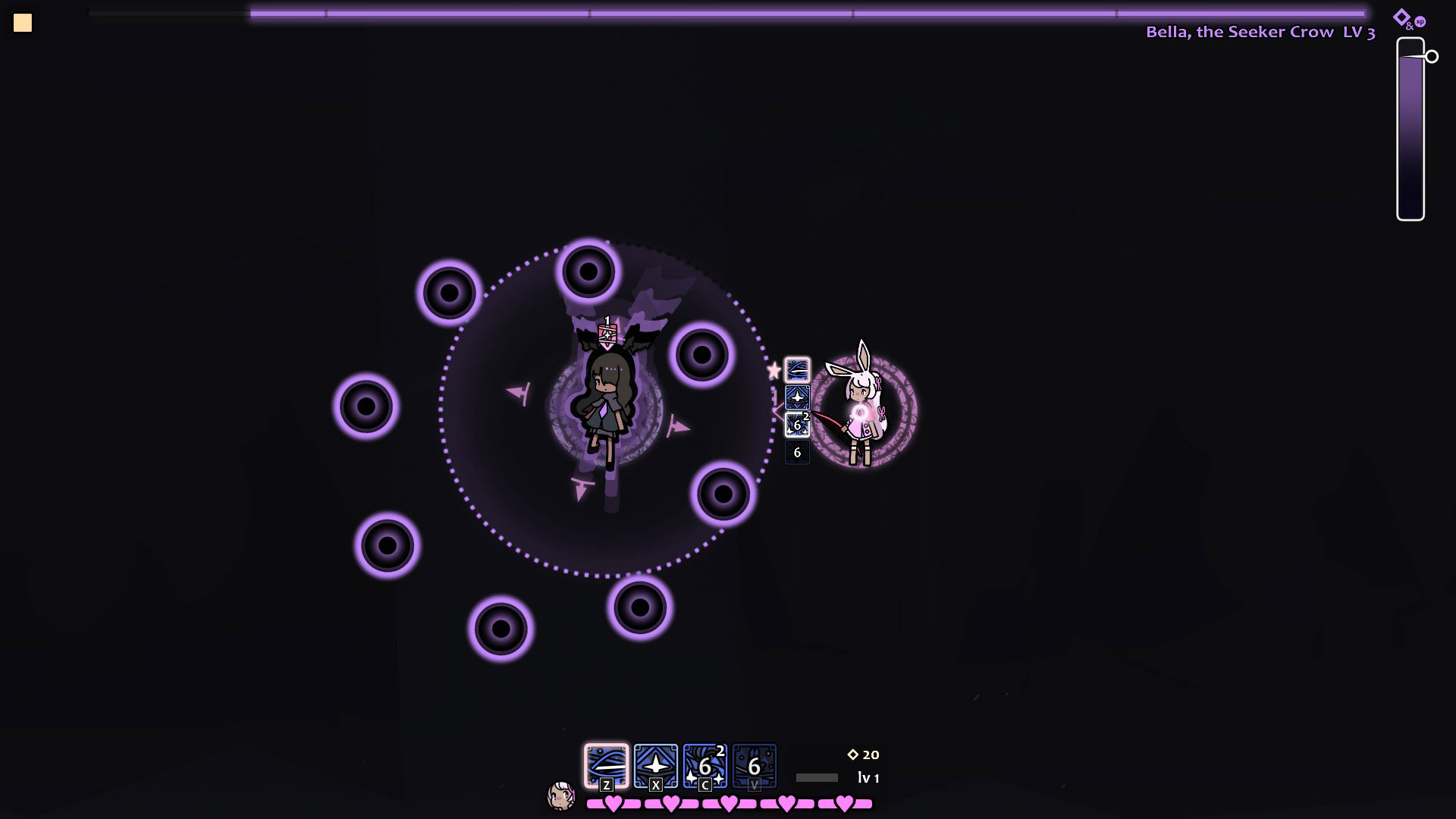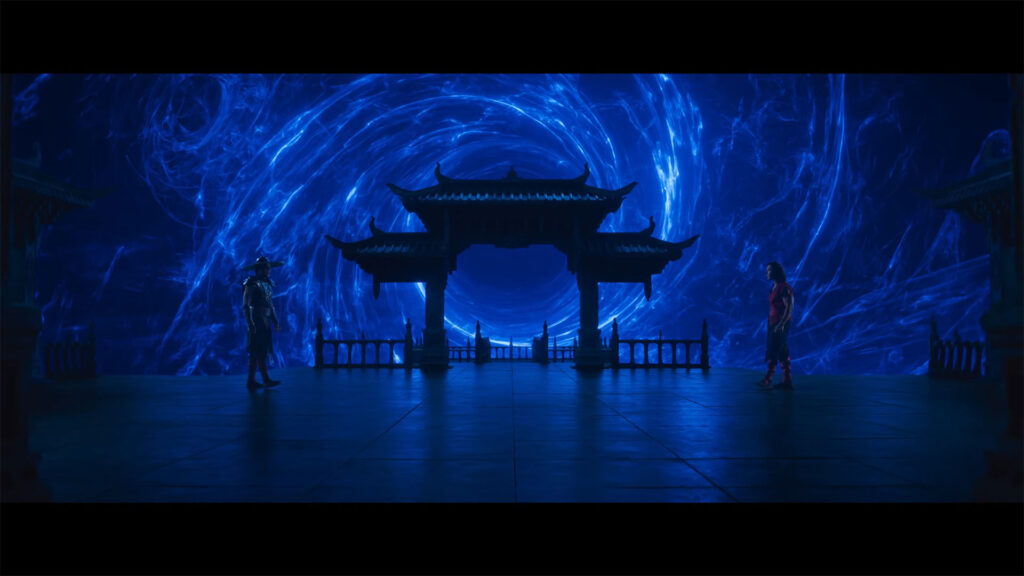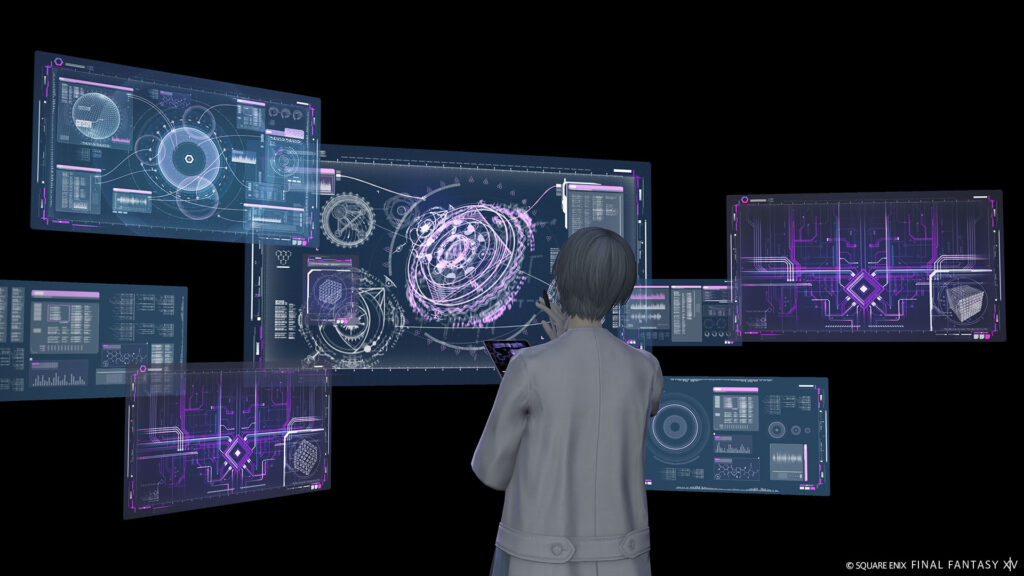Quick Verdict
Rabbit and Steel is the creation of solo developer mino_dev, demonstrating how brilliantly a game can be designed when it’s not driven by a revenue-first mindset. On paper, the idea behind Rabbit and Steel is rather basic; it’s an action roguelike game that wants to recreate what it’s like to raid in an MMORPG but in a 2D setting. Veterans of Final Fantasy XIV and World of Warcraft will understand the appeal—especially those familiar with Final Fantasy XIV—but Rabbit and Steel is also a great way to experience what raiding is like if you’ve always found it too daunting in an MMORPG.
The game offers matchmaking for online play, and from what I’ve seen, the community is friendly. Just be sure to let your groupmates know if you’re new to the game or if you have any questions. Of course, it can also be played solo, but many of the mechanics are replaced with bullet hell elements, so it’s less about doing the right thing and more about avoiding projectiles.
Hop, Lock, and Load

Rabbit and Steel is officially described as a “co-op action roguelike that recreates the essence of high-level MMO raiding in a randomized, simplified, bunny-sized package.” If you’ve played roguelike games before, like Slay the Spire, progression in Rabbit and Steel will be familiar to you. The game is essentially a boss rush and building your character involves selecting upgrades to your skills, leveling, and choosing the best loot for your build. The game has several classes to choose from, some of which are unlocked behind achievements—mainly killing a certain number of bosses. The base five classes are Wizard, Assassin, Heavyblade, Dancer, and Druid, offering a mix of melee and ranged options to choose from. The unlockable classes are Spellsword, Sniper, Bruiser, Defender, and Ancient.
Initially, I found melee to feel a bit weaker to play with all the different mechanics, but Assassin eventually became my most comfortable class. Choosing the best class in Rabbit and Steel is a lot like choosing a weapon in Monster Hunter: pick the one you’re most comfortable with. The more you play a class, the more you’ll learn what items and skill upgrades to look for in order to maximize DPS (damage per second). In true MMORPG raiding fashion, Rabbit and Steel displays DPS for each player after each boss. You don’t have to worry about this being toxic, though, as some builds are more supportive than others, and DPS isn’t always the most important factor.
Raid. Die. Repeat.

The core gameplay loop for Rabbit and Steel is pretty straightforward. Players cycle through their skills based around global cooldowns while resolving boss mechanics in the arena. These mechanics include stacking with your companions or spreading away from them, avoiding damage zones, and stretching tethers. When it comes to your skills, each class has a primary and a secondary attack, a special, and a defensive skill. For damage, each time you fail a mechanic, you lose one health bar. The difficulty level affects how many starting health bars you have, but some of the over 100 items in the game can also increase your health.
Rabbit and Steel plays a bit like a survivors-like game, especially when playing solo. Instead of dealing with dozens of mobs on your screen, you’re typically fighting one or two bosses and dancing around their mechanics. Like other survivors-like games, one of the best parts of the game is picking the best items and upgrades made available to you along the way and trying to figure out how to maximize DPS or utility for your group. When playing with friends, you’re sharing the loot, so if multiple people choose one item, you’ll roll on it just like you would in an MMORPG. If you lose the roll, you’ll get the option to choose another item. It’s best to coordinate with your groupmates so they don’t roll on an item you need for your build.
Moonlit Mastery

Unlike the MMORPGs that inspired Rabbit and Steel, the game lacks a real story. It’s not completely void of one, as there is some dialogue and conversation as you progress through the areas, but it’s nothing too interesting. It’s very much like Slay the Spire and Vampire Survivors in that regard, meaning the story shouldn’t be the reason you’re playing the game. The reason to play Rabbit and Steel is that it’s one of the most fun co-op games we’ve played this year. It can get very difficult, and the learning curve may be steep if you don’t have much experience raiding in an MMORPG. In the same vein, Rabbit and Steel isn’t the game for you if the idea of repeating a boss several times to learn its mechanics isn’t appealing.
Most of the bosses are very well designed, and there’s a good variety as you progress through the levels. It can feel a bit repetitive once you learn everything, but like endgame raiding, executing perfectly time and time again isn’t so easy. It’s also worth mentioning that the meta progression is a bit different from other roguelikes. You don’t actually get passives to make you stronger after each run, instead you’re unlocking new items that can make you more powerful so that runs are subsequently easier. Some of these items also increase in complexity, making builds more fun to construct.
Raiding Rabbits

So far, this is a glowing review for Rabbit and Steel, but it does have its frustrations. The screen can get a bit overwhelming, and I feel like some of the elements could be better designed to make the indicators more obvious. If you’ve played Final Fantasy XIV throughout the years, you’ll understand what I’m talking about. Over the course of each expansion, the team has refined many of the indicators and markers, making it less about reading and more about reacting. Even with over 30 hours in Rabbit and Steel, some markers aren’t clear to me right away, especially when there are multiple things happening on the screen with three other players. Visual clarity can certainly be improved.
My other gripe is not having the ability to save in the middle of a run. A full clear can take upwards of 40 minutes, which can be a lot of time to commit when you’re playing with a group of four. Finally, I really wish the item store had an option to get currency if none of the items work for your build. I understand that this forces players to make a strategic decision, but choosing the best of the worst never feels great.
A Smile Better Suits a Bunny

Overall, Rabbit and Steel is a brilliantly designed game, and I’m surprised it has taken this long for someone to combine the spirit of a roguelike with the mechanics of MMORPG raiding. I praise the game for its gameplay and how it’s managed to capture the essence of MMORPG raiding, but in a 2D fashion. It’s a fantastic co-op experience—the best we’ve had all year—but there’s definitely room for improvement. It’s very impressive as a solo developer title, and the soundtrack from はがね/STEEL_PLUS is excellent. Not Final Fantasy XIV-level good, but impressive for an indie game with a $14.99 price tag.
I do recommend starting the game by playing alone to understand how it all works. After a few attempts, you’ll want to play online with your friends or join an existing group to get the full enjoyment Rabbit and Steel has to offer. If you’ve ever felt the satisfaction of taking down an endgame raid boss with a group of your friends, you know there are very few feelings like it in this world. While Rabbit and Steel doesn’t capture exactly that, the first time you manage to complete a run with your friends, it’s pretty damn satisfying.
Rabbit and Steel’s official release date is May 9, 2024 on PC. This review is based on a purchased retail copy of the game on PC. While FullCleared does have affiliate partnerships, they do not influence our editorial content. We may, however, earn commissions for products purchased via affiliate links.























